Remembering Leonard Robinson
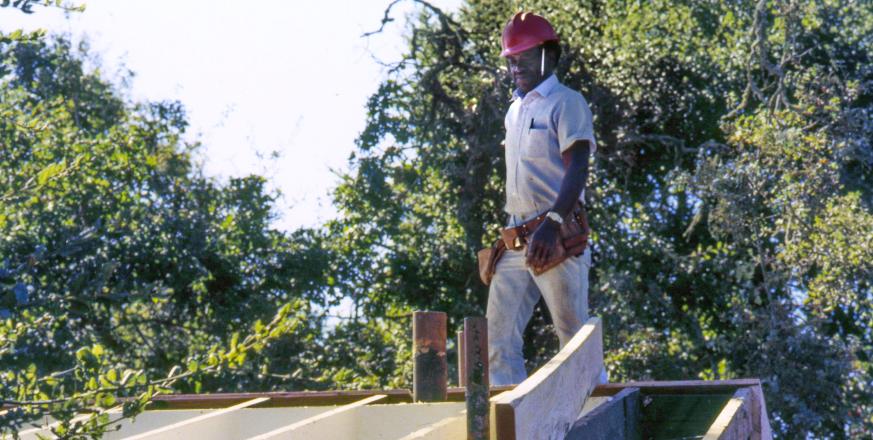
From 1970 to 2007, Leonard Robinson was the Jasper Ridge caretaker, a title that barely skims the surface of decades of contributions to the preserve. He was the carpenter, mechanic, heavy equipment operator, and plumber who kept the place functioning. He was also a dedicated father who raised a family at Jasper Ridge, and a blues guitarist. His legacy at the preserve is broad and deep.
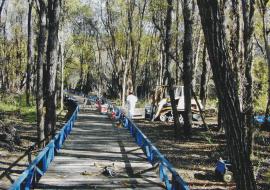 Leonard was a man of purpose and a mastermind of repurposing. Any material that someone else was ready to dispose of—equipment, vehicles, trailers, sheds, lumber, and other building supplies—Leonard could envision a new purpose for, often in an entirely new configuration. For most of his time at Jasper Ridge, Leonard was also a full-time carpenter at SLAC, which was an unbeatable source of high-quality materials that had fulfilled their initial purpose but still had some life in them. One example is the steel frame of “Leonard’s bridge” in the willow wetland. Whatever purpose the steel had served at SLAC, you can be certain it bore no resemblance to a boardwalk through a wetland atop an aggrading delta. For decades, nearly every structure at Jasper Ridge was similarly constructed or modified. Jasper Ridge’s rustic facilities seemed time-worn because they were exactly that.
Leonard was a man of purpose and a mastermind of repurposing. Any material that someone else was ready to dispose of—equipment, vehicles, trailers, sheds, lumber, and other building supplies—Leonard could envision a new purpose for, often in an entirely new configuration. For most of his time at Jasper Ridge, Leonard was also a full-time carpenter at SLAC, which was an unbeatable source of high-quality materials that had fulfilled their initial purpose but still had some life in them. One example is the steel frame of “Leonard’s bridge” in the willow wetland. Whatever purpose the steel had served at SLAC, you can be certain it bore no resemblance to a boardwalk through a wetland atop an aggrading delta. For decades, nearly every structure at Jasper Ridge was similarly constructed or modified. Jasper Ridge’s rustic facilities seemed time-worn because they were exactly that.
Leonard’s roots were in the south and did not include much formal education. Although he was a man of few words, many of them were about the value of education. His advice to students, quoted in a memorable piece in the Stanford Report, was, “Get your degree. Then get another one.” Those words were not just for Stanford students. Leonard raised eight children at Jasper Ridge, and all of them attended college. They also worked at Jasper Ridge, rangering when it was a public park, building and fixing things for the preserve, and maintaining and cleaning buildings. Summer after summer, there were Robinsons on the lake every day operating the aquatic harvester to cut parrotfeather and then compost it on higher ground.
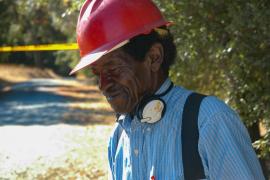
As much as he valued formal education and degrees, Leonard was also ready to let people learn the hard way if they chose to. When he found an ill-equipped student (or a staff member!) trying to do something far beyond their know-how, he would say, “You could do it that way….or you could do it the right way.” And then, pretty much always, he let them choose. But if your vehicle got stuck in a muddy road after he warned you not to drive too soon after it rained, he waited a while, and then, just when you were going to kick yourself for thinking that the first law of rain and dirt roads didn’t apply to you, Leonard rescued you with the tractor. One of the classic rescue spots was the hairpin in road D above Rattlesnake Rock. Leonard could see that spot from his workplace at SLAC, and more than once he drove over during his lunchbreak, even without being called, to tow someone out. Being rescued is something one remembers, and many share that memory.
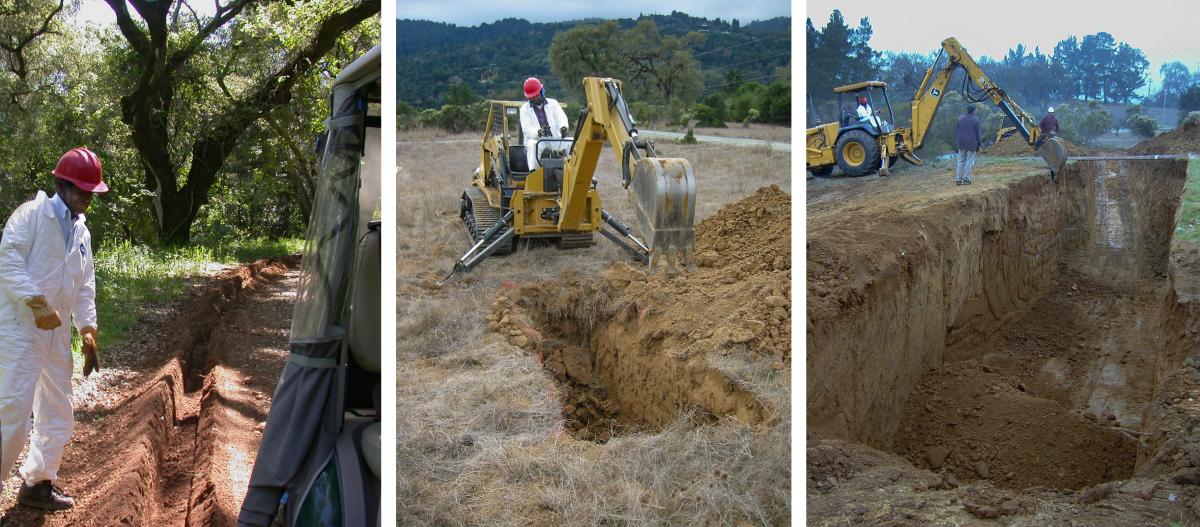 Leonard moved earth, and he moved people. He maneuvered a tractor with so much precision, speed, and grace it was more like a dance partner. He operated a backhoe like a surgeon, whether digging trenches for utilities, pits for soil profiles, or a cavern for the rainwater cistern. He also worked safely and set the standard for always wearing safety gear.
Leonard moved earth, and he moved people. He maneuvered a tractor with so much precision, speed, and grace it was more like a dance partner. He operated a backhoe like a surgeon, whether digging trenches for utilities, pits for soil profiles, or a cavern for the rainwater cistern. He also worked safely and set the standard for always wearing safety gear.
Leonard believed in working hard, not because he expected to get rich that way. Not in his job. He routinely bought lottery tickets, but there was never any doubt that what he valued most was what he already had—his kids. Their photographs, awards, and trophies were the first thing you saw in his living room, arrayed on the mantel of his fireplace.
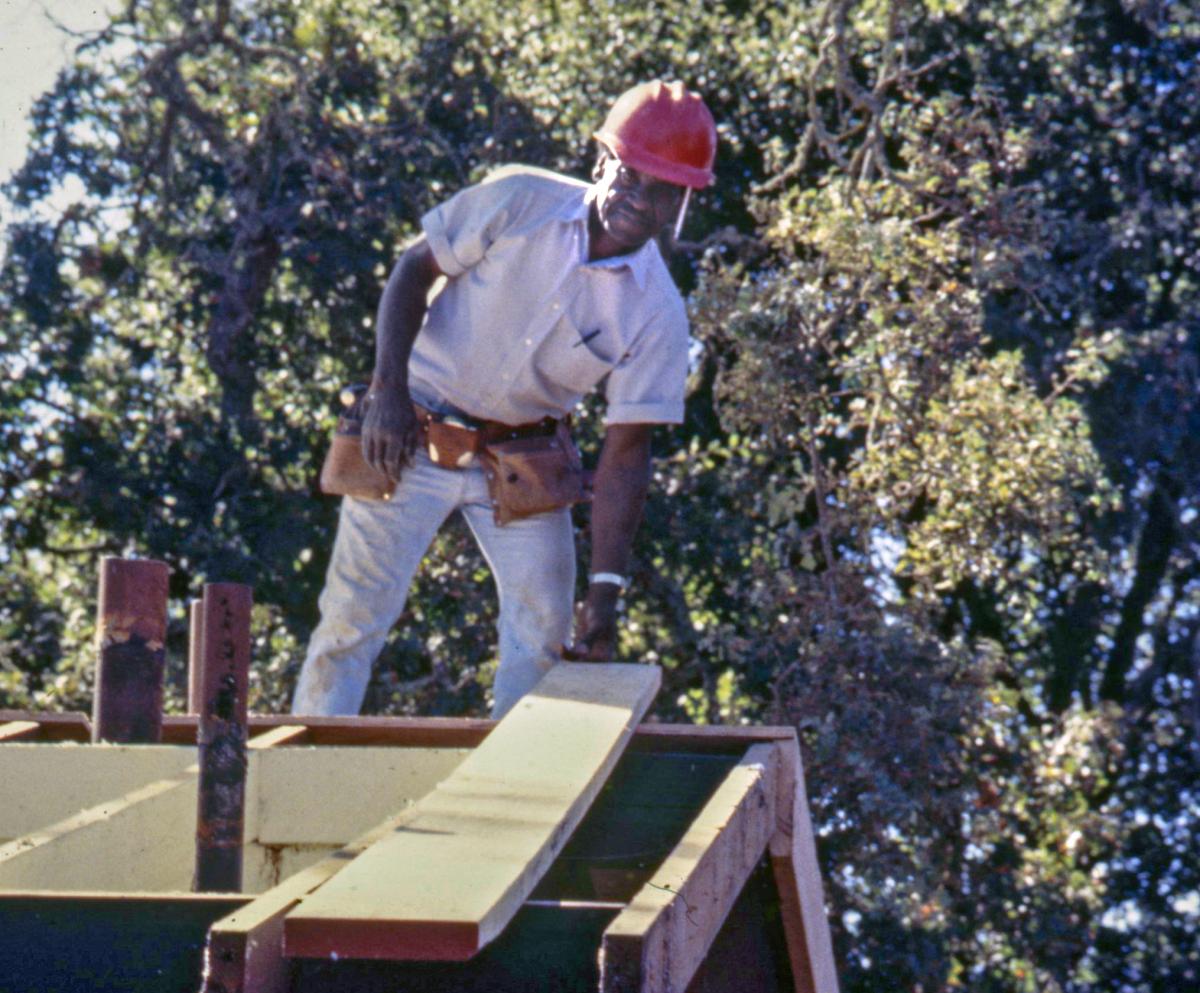 Aside from Leonard’s bridge there are few obvious reminders of how much Leonard shaped Jasper Ridge, but one is very much worth sharing. When Jasper Ridge took over Searsville Park in 1976, Leonard switched from working for the park to working for the preserve. That was the same year the Dudley Herbarium moved from the Stanford Museum to the California Academy of Sciences. The herbarium space in the museum had included a rotunda room where roundtable discussions took place, including the seminal discussions about the theory of coevolution. With the departure of the herbarium, the furniture had to go, too, and one of Leonard’s first jobs for the preserve was moving the 8ft diameter round table from the museum to the Searsville snackbar to create a meeting room. The table would not fit through the door or down the stairs, so Leonard and a helper sawed the table in half, transported each half to Searsville, and then roughly patched it together again. It served as the Searsville seminar table for 26 years and now graces the library in the Sun Field Station. It’s a good symbol of the physical labor that sustains a place like Jasper Ridge and all it provides to our community.
Aside from Leonard’s bridge there are few obvious reminders of how much Leonard shaped Jasper Ridge, but one is very much worth sharing. When Jasper Ridge took over Searsville Park in 1976, Leonard switched from working for the park to working for the preserve. That was the same year the Dudley Herbarium moved from the Stanford Museum to the California Academy of Sciences. The herbarium space in the museum had included a rotunda room where roundtable discussions took place, including the seminal discussions about the theory of coevolution. With the departure of the herbarium, the furniture had to go, too, and one of Leonard’s first jobs for the preserve was moving the 8ft diameter round table from the museum to the Searsville snackbar to create a meeting room. The table would not fit through the door or down the stairs, so Leonard and a helper sawed the table in half, transported each half to Searsville, and then roughly patched it together again. It served as the Searsville seminar table for 26 years and now graces the library in the Sun Field Station. It’s a good symbol of the physical labor that sustains a place like Jasper Ridge and all it provides to our community.



